Asus GeForce GTX 1080 Ti ROG Poseidon Platinum Review
September 27, 2017 | 17:00
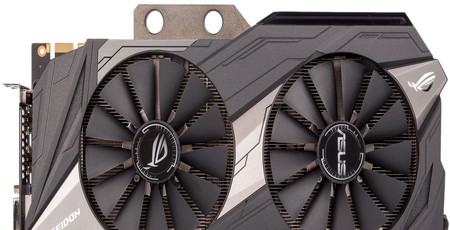
Manufacturer: Asus
UK price (as reviewed): £899.99 (inc. VAT)
US price (as reviewed): $859.99 (exc. tax)
As Nvidia retains its hold on the very top of the GPU market with the GTX 1080 Ti, board partners continue to create more lavish cooler designs in a bid to entice those oh-so-lucrative customers who can afford to spend £700 or more on a GPU. Asus is no stranger to such designs, and the GTX 1080 Ti ROG Poseidon Platinum is further proof of this. Its key selling point is its DirectCU H2O Hybrid Cooling, Asus' way of saying that it can be cooled by air like normal or integrated into a water-cooling loop without needing to modify the card or break your warranty. This isn't the first such card we've seen, but Asus does claim to have improved its design, so let's take a closer look.
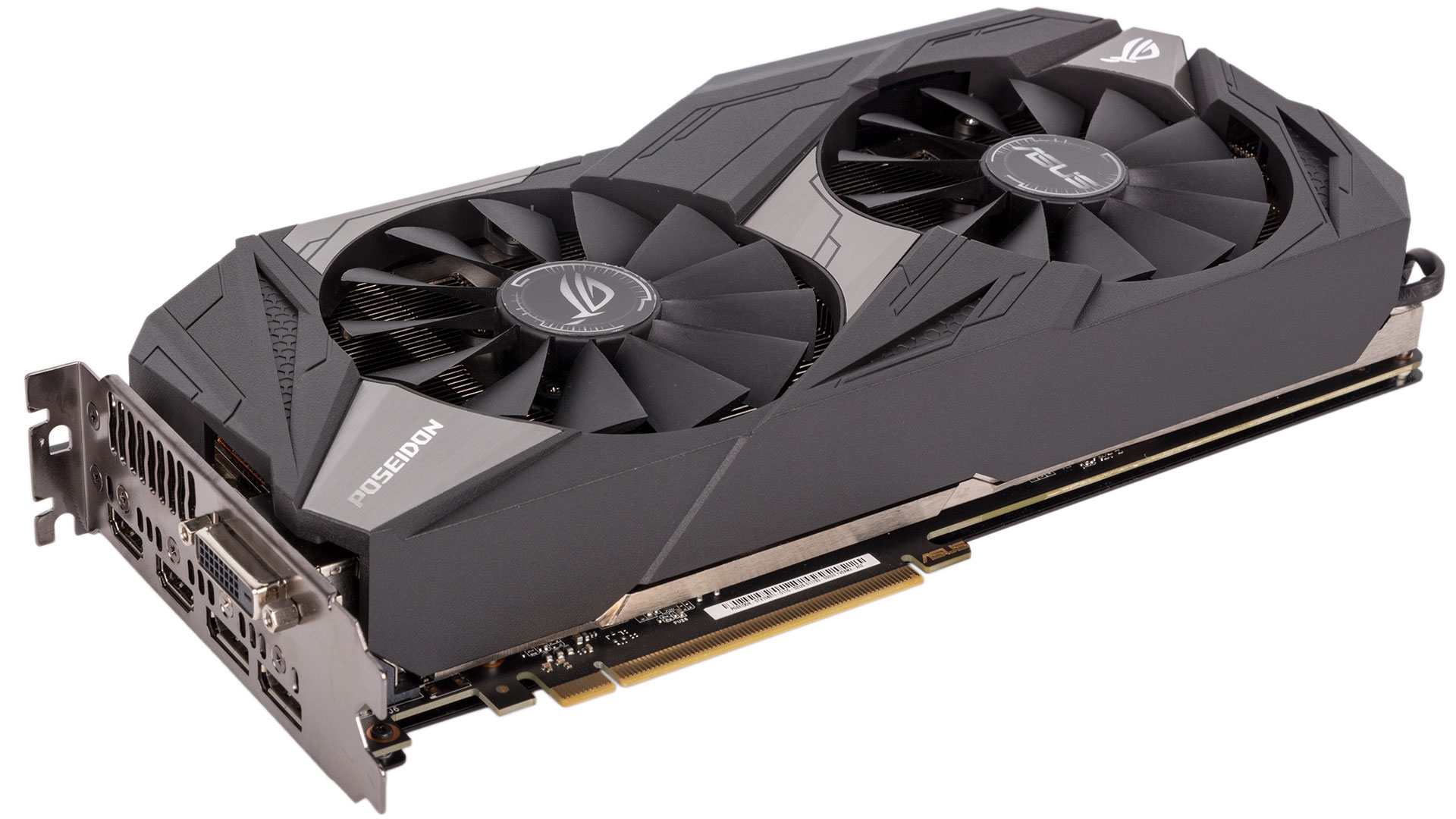
Shallow creatures that we are, the first thing we were struck by with this card is its sheer beauty. You're free to disagree, but we think it's a gorgeous piece of hardware, and the silver and black shroud with sharp lines and indentations looks modern, clean, and interesting all at once. Regardless of your opinion on the aesthetics, a more tangible benefit is the build quality, as the GTX 1080 Ti Poseidon is simply rock solid. The metal backplate plays a part here, but with a die-cast block atop the PCB, a separate aluminium heatsink, and a thick plastic shroud, this card is a real unit. It's also large, especially with its 158mm height and the fact it extends into a so-called 2.5-slot form factor – make sure you consider these dimensions when planning your build.
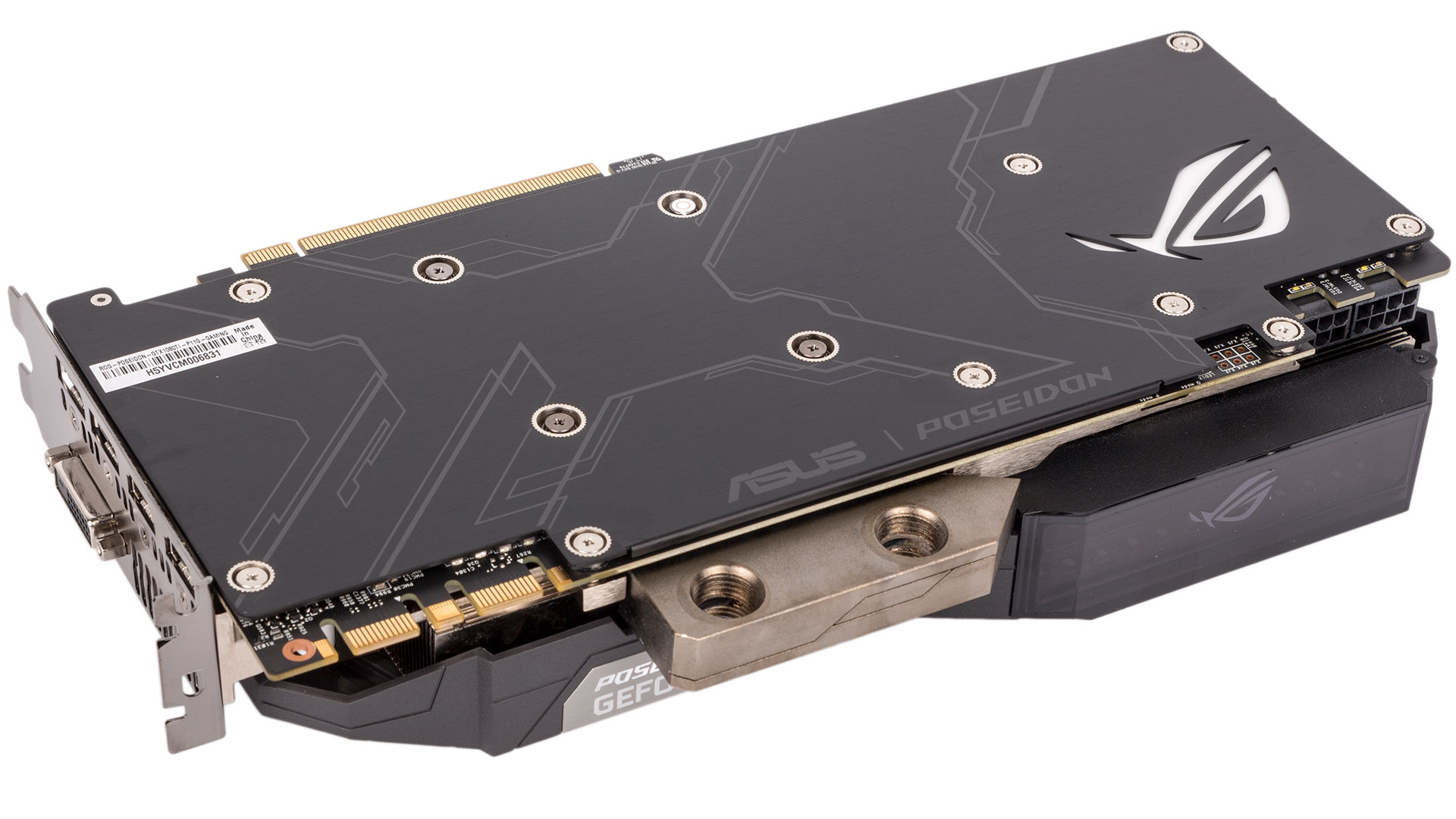
Default clock speeds are 1,594MHz base and 1,708MHz boost with no memory overclock. This is the card's Gaming Mode, but you can easily switch to OC Mode in Asus GPU Tweak II, which raises the base and boost clocks to 1,629MHz and 1,733MHz respectively while also pushing the memory to 11.1Gbps. A higher memory overclock would definitely have been nice, but the core clocks are nice and high, and we expect to see some good boosting, especially when the card is liquid-cooled.
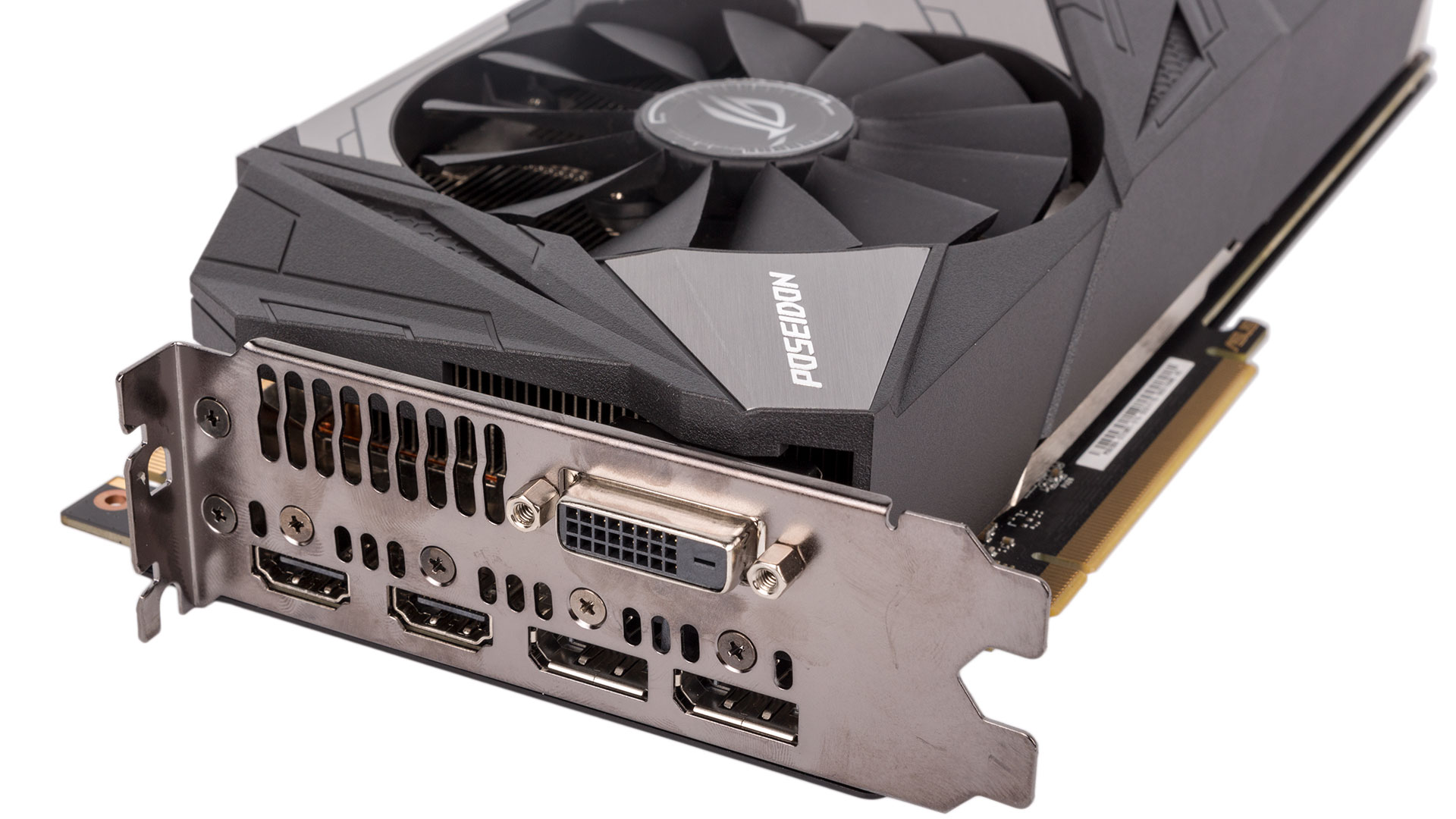
Asus adopts its VR-friendly approach to display outputs, trading a DisplayPort for a second HDMI header so users can have a HDMI display and VR headset connected at the same time. A dual-link DVI-D connection is also provided.
Power comes in via a pair of eight-pin PCIe connectors, which is plenty of juice. Asus also supplies two dual six-pin to single eight-pin PCIe adaptor cables in case your PSU only has six-pin headers. The adaptors have individually braided red and black cables and come with some Velcro cable ties too.
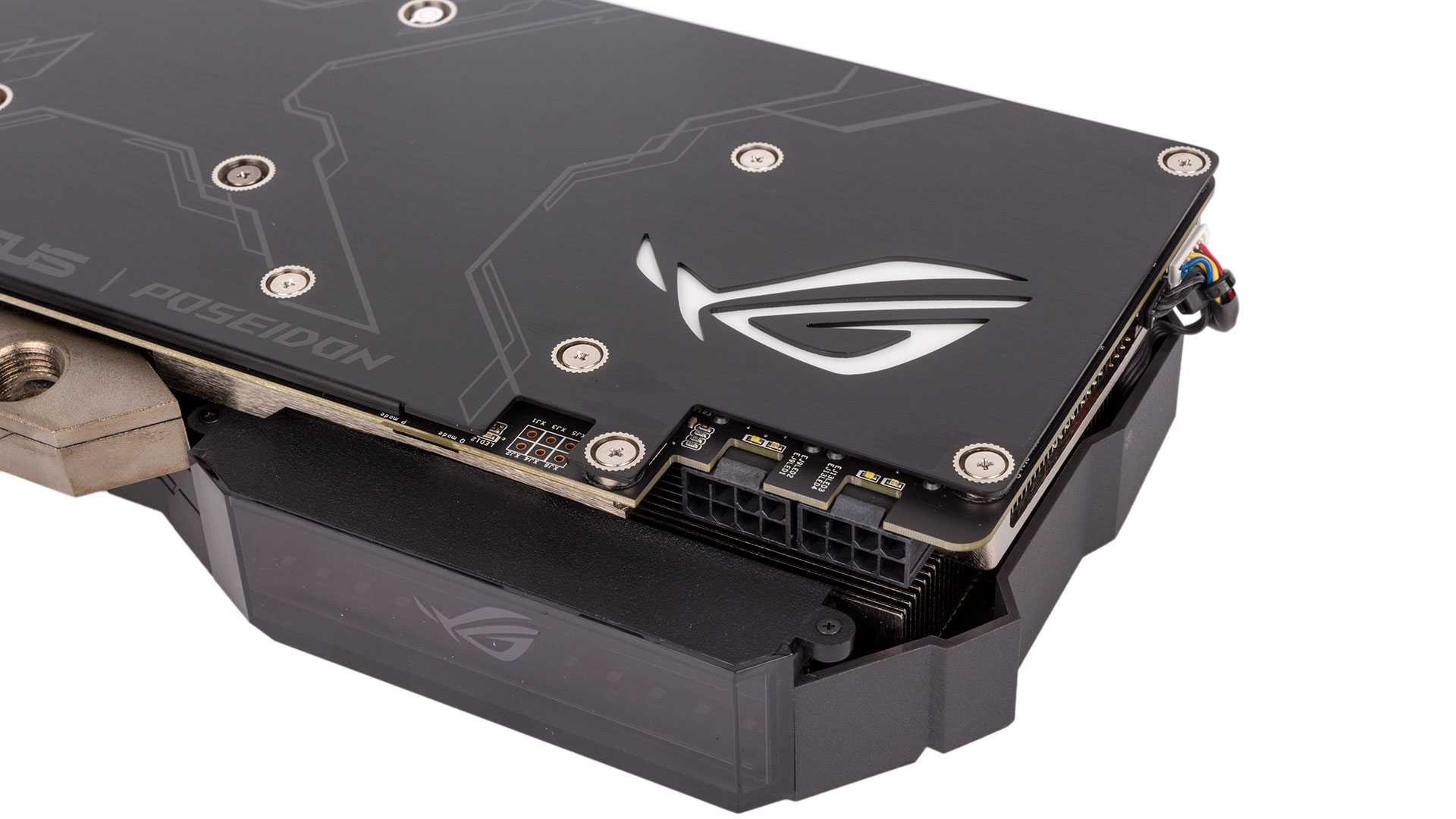
The black metal backplate has integrated RGB lighting, and there's a separate RGB LED area on the top edge of the shroud (seen in the above picture below the power connectors) with a neat mirror setup that gives it a very cool “infinity” effect like that seen on the In Win 805 Infinity case. The LEDs are, naturally, controlled through Asus Aura Sync, meaning they can be synchronised with other compatible RGB hardware. Furthermore, there’s a four-pin Aura Sync RGB header at the far edge of the PCB, so you can use this to hook up additional RGB LED strips, for example, and again synchronise their colour and effect with those of the GPU.
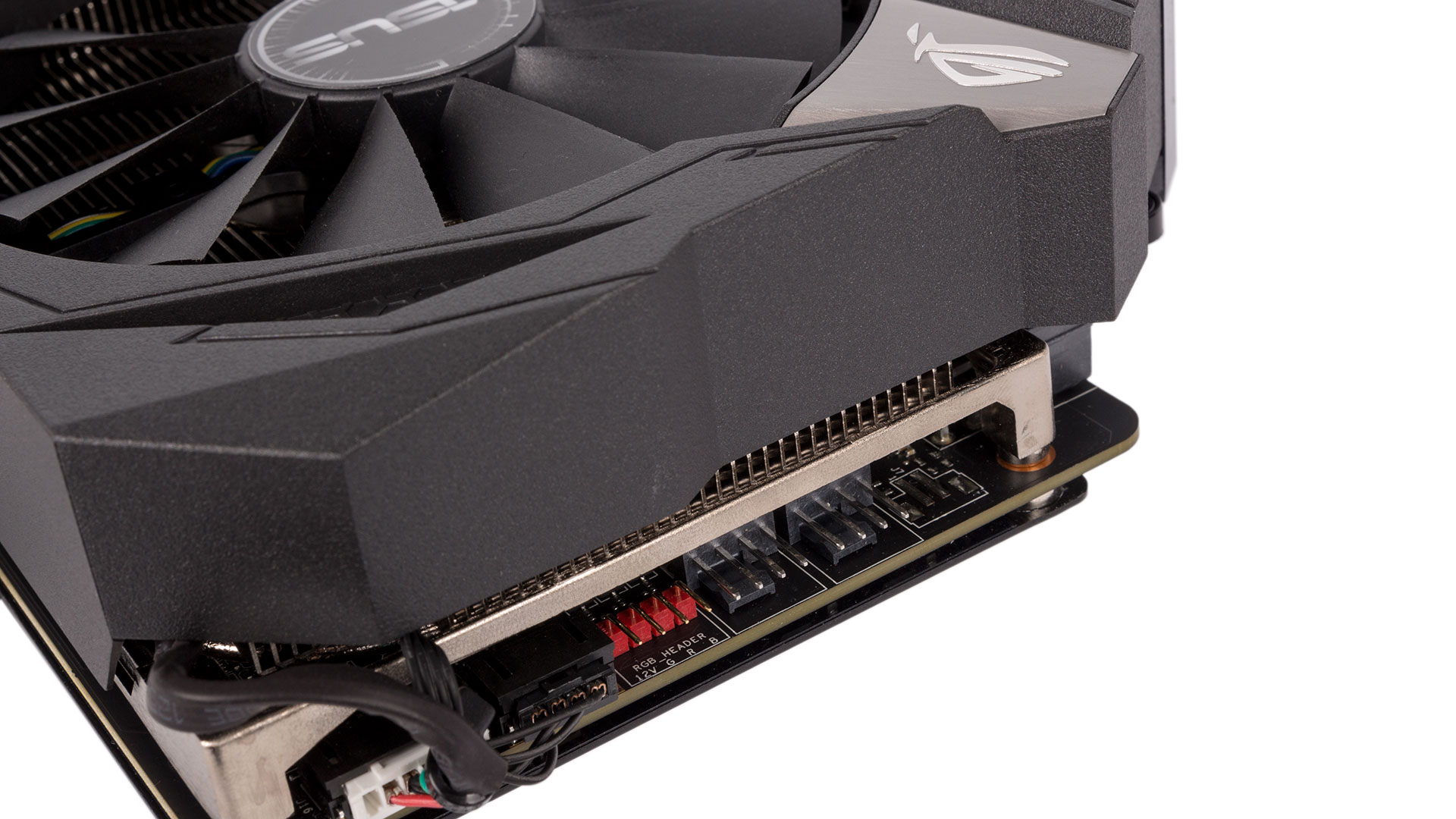
The RGB header is also joined by a pair of four-pin fan headers, a feature Asus calls FanConnect II. Essentially, you can connect a couple of case fans (PWM and DC are supported) and then tune and control them based on either the CPU or GPU temperature – pretty nifty.
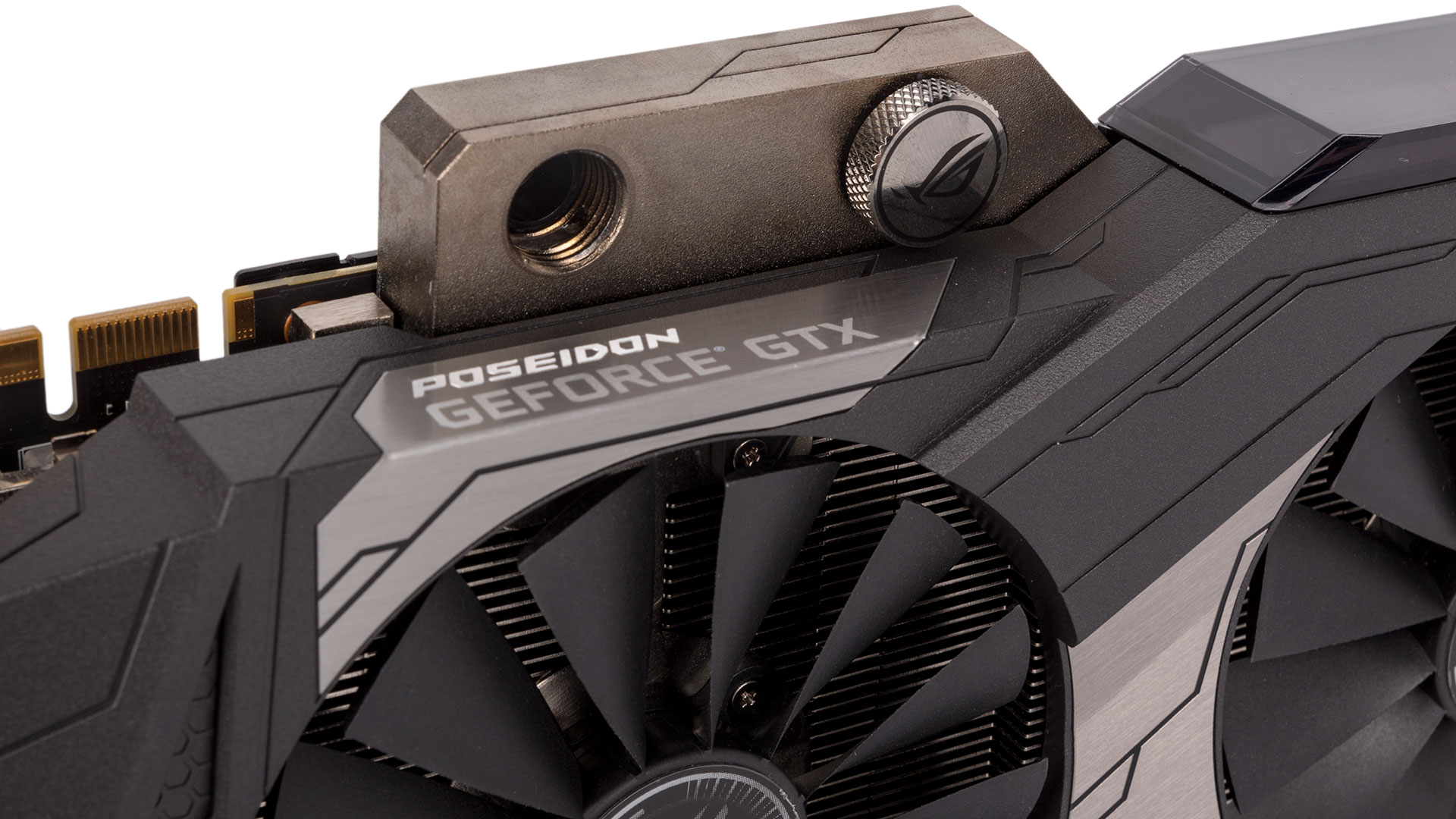
With its DirectCU H2O Hybrid Cooling solution, Asus is pointing to temperatures being 5°C cooler on air and 30°C cooler on water compared to the Founders Edition card. A massive slab on die-cast metal makes direct contact with the GPU, VRAM, and critical power components, with U-shaped tubing passing above the GPU and terminating at the card's G1/4” threads. This won’t be as effective as a dedicated block with micro-fins and more coverage, but it should serve its purpose well enough. The entrance and exit points are double-sided, so you have easy SLI support and can feed your tubes in from whichever side best suits your loop, closing the gap on the opposite side with the supplied metal, ROG-branded plugs. Asus claims it has improved the design such that in-channel flow rate is boosted by 22 percent.
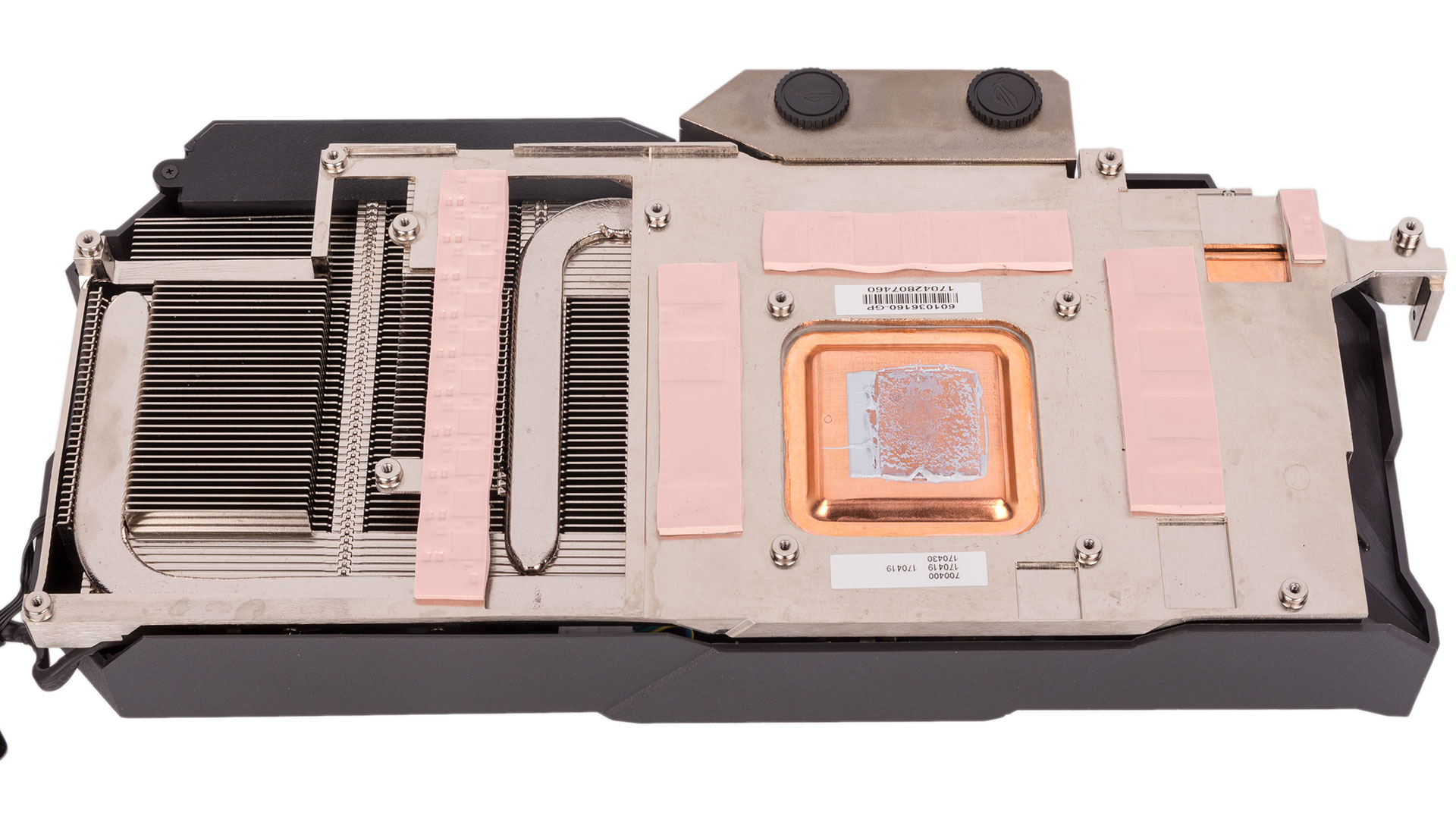
Atop the water block is a heatsink which has been extended to a 2.5-slot design, giving Asus an additional 40 percent of area for heat dissipation. Heat is actually dissipated by the two Asus Wing-Blade fans that, as we've seen before, uses the company's patented, IP5X-certified design to help protect against dust intrusion into the fan bearings. These fans spin in the same direction, and a fair amount of air should go directly out of the rear I/O panel thanks to the heatsink fins' orientation and the semi-closed cooler shroud. The fans will also switch off completely whenever the GPU is below 55°C.
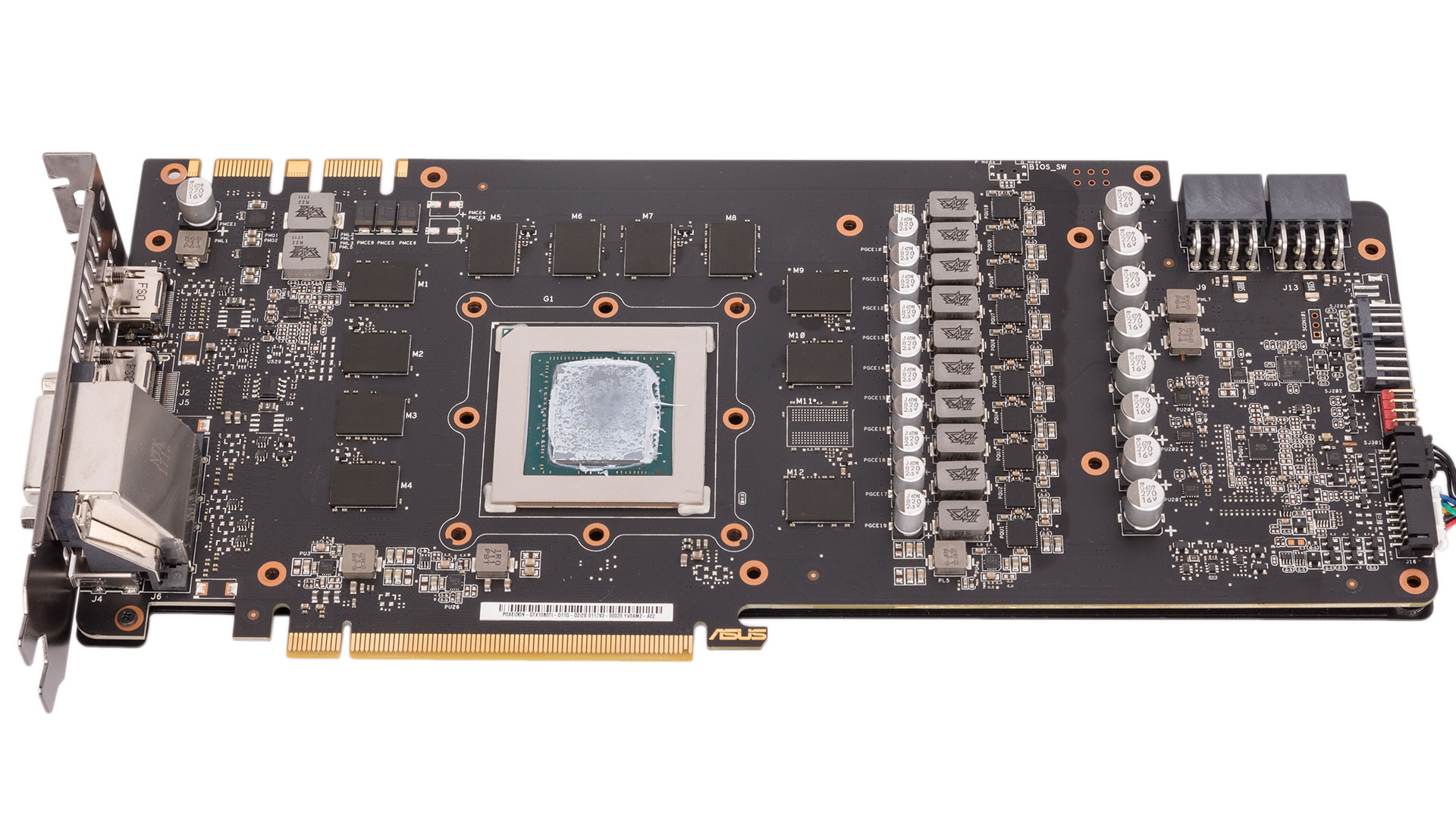
Asus also likes to highlight its 100-percent automated production process that it now uses on all its graphics cards. Known as Auto-Extreme, the process is flux-free and should result in a higher quality PCB and reduced failure rates. With this premium card, Asus is naturally using its full suite of Super Alloy Power II components in a large 10+2 phase power delivery. Promised benefits of these components include longer lasting capacitors, chokes made with a concrete alloy that offer decreased buzzing noise, cooler and more efficient MOSFETs, and capacitors that are specifically designed to boost overclocking headroom.
Specifications
- Graphics processor Nvidia GeForce GTX 1080 Ti, 1,594MHz (1,708MHz boost) (1,629MHz / 1,733MHz in OC Mode)
- Pipeline 3,584 stream processors, 224 texture units, 88 ROPs
- Memory 11GB GDDR5X, 11Gbps effective (11.1Gbps effective in OC Mode)
- Bandwidth 484GB/sec, 352-bit interface
- Compatibility DirectX 12, Vulcan, OpenGL 4.5
- Outputs 2 x DisplayPort 1.4, 1 x dual-link DVI-D, 2 x HDMI 2.0b
- Power connections 2 x 8-pin PCIe, top-mounted
- Size 298mm long, 158mm tall, triple-slot
- Warranty Three years

MSI MPG Velox 100R Chassis Review
October 14 2021 | 15:04

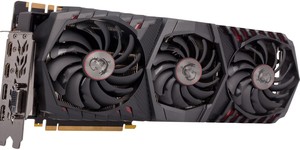
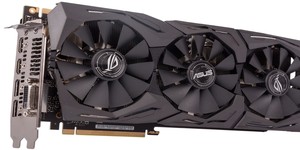





Want to comment? Please log in.